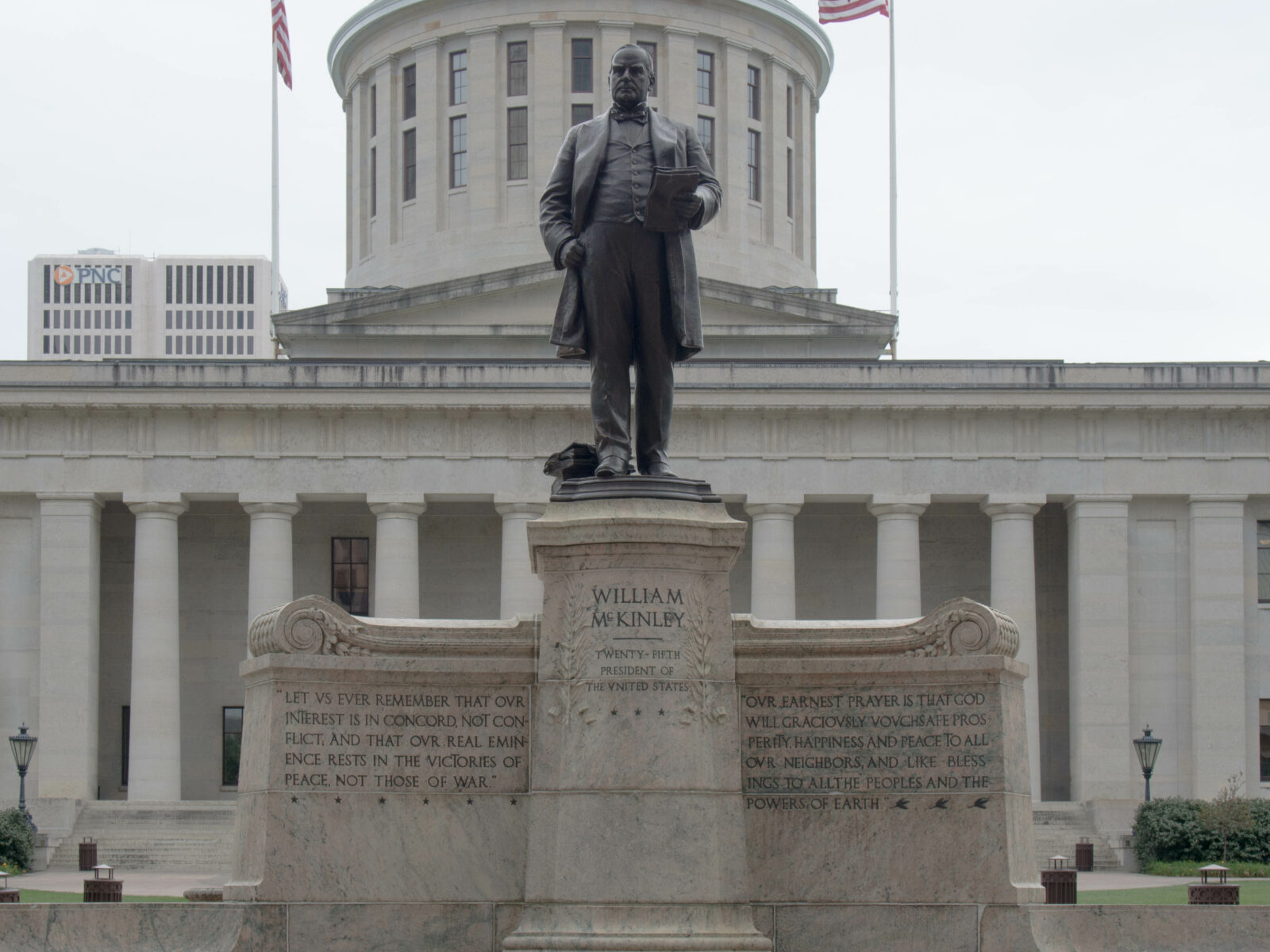Removing Monuments Becoming Last Straw for Americans
Originally published at NewsmaxIt’s a sign of our times that the most impressive and meaningful monument known as the Reconciliation Monument, located in Arlington Cemetery (in Arlington, Virginia): hallowed and sacred ground in America, has been scheduled to be removed on Dec. 18.
One week before Christmas.
Christmas marks the birth of the Jesus Christ, our savior providing reconciliation between sinful humankind and God, as well as providing reconciliation between people as individuals, as well as between people and nations.
President William McKinley (in office, serving from 1897 until his 1901 assassination) conceived of a Reconciliation Monument as a way of celebrating the success of a reunified nation, a nation that fielded an army and navy of enlisted men and officers from both the Southern and the Northern states, who fought so effectively together delivering a surprisingly swift U.S. victory in the Spanish-American War of 1898.
This theme of respect and reconciliation between the northern and southern states was also supported by the next three presidents — Theodore “Teddy” Roosevelt, Howard Taft, and Woodrow Wilson.
Each believed in the importance of celebrating the reunification and reconciliation of America, even though it was many years after a bloody and divisive Civil War.
Since Woodrow Wilson unveiled the Reconciliation Monument in Arlington Cemetery in 1914 proclaiming that, “the monument represented the best of America — a spirit of reconciliation, democracy, freedom, heroism and patriotism”— hardly anyone voiced any criticism of this grand monument; a unique masterpiece of intricate bronze sculpture.
It is 33 feet tall.
In fact, most observers viewed the monument with reverence and awe.
It captured the e pluribus unum first conceived in 1776 at the time of the writing of the Declaration of Independence and incorporated as a motto in the Great Seal of the United States better than any other monument in Arlington, or elsewhere.
But that all changed with the Woke Revolution of 2020.
Congress felt the need “to do something” following the urban riots and massive property destruction which swept across U.S., following the unfortunate death of George Floyd, in Minneapolis, Minnesota.
No matter that most of the Confederate statues had already been toppled and destroyed during the spring, summer, and fall of 2020.
Instead of enforcing the law with rioters who destroyed property, Washington dealt with the problem by having Congress form a “Naming Commission” to “remove all names, symbols, displays, monuments and paraphernalia that honored or commemorated the Confederate states of America . . . ” as though this would appease Black Lives Matter (BLM) and Antifa.
Although the Reconciliation Monument was not conceived to commemorate, nor pay tribute, to the Confederacy but rather to honor and celebrate the spirit of reunification and reconciliation of the North and South, the Democratic-dominated Naming Commission decided to ensnare the Reconciliation Monument in their crusade to remove all vestiges of anything related to Confederate heritage.
What’s confounding for many observers is America’s betrayal of the ideals and recognition of the United States as the world’s leading country made up of diverse ethnicities and races.
It’s as though there has been a willful effort to elevate the dark and divisive side of human nature, while diminishing the virtuous side that embraces respect and tolerance. Societal characteristics which have played an integral part in diverse Americans living and working cohesively, for decades.
And nowhere is thisesprit de corps more critical than it is in the military, whose sole purpose is to maintain morale, training, and teamwork – at levels to deter war.
And when that fails, to fight and win wars.
With the Naming Commission disbanded in the autumn of 2022, many people have wondered why U.S. Secretary of Defense Lloyd Austin has remained so determined to remove from Arlington America’s only monument dedicated to Reconciliation.
Many have observed that the U.S. armed forces have been infiltrated by an ideology and an officer corps shaped by Diversity, Equity, and Inclusion (DEI) and Critical Race Theory (CRT). These initiatives have eliminated merit as criteria for promotion, replacing it with quotas, as well as intersectional categories of oppressed and oppressors.
On Austin’s watch as secretary of defense, critical race theory and reverse racism have continued to be part of the training in every branch of the military. This has served to undermine the morale and solidarity of enlisted men and women.
And adding injury to insult, demoralization throughout the military is the number one cause of the scandalous recruiting shortfalls at present in every military branch.
But just when it appears the woke in power are going to prevail, the American people are turning the tables. In the last four months there were two public hearings on procedural matters regarding the removal of the Reconciliation Monument.
Each of those meetings had turnouts of over 100 people, and in each it was more than 100 to 1 in favor of leaving the Reconciliation Monument alone.
Additonally, there has been an enormous grass roots movement, one lobbying members of Congress, resulting in the House of Representatives taking action to prevent funding for the removal of Reconciliation Monument in the Fiscal Year 2024 Department of Defense Appropriations Act.
Recently, on Dec. 11, 44 members of Congress signed a letter to Defense Secretary Austin, “demanding that the Department of Defense immediately suspend all removal activities of the Reconciliation Monument located in Arlington National Cemetery until Congress completes the Fiscal Year 2024 appropriations process.”
The battle is not yet over, but the tables have turned and the momentum is growing.
